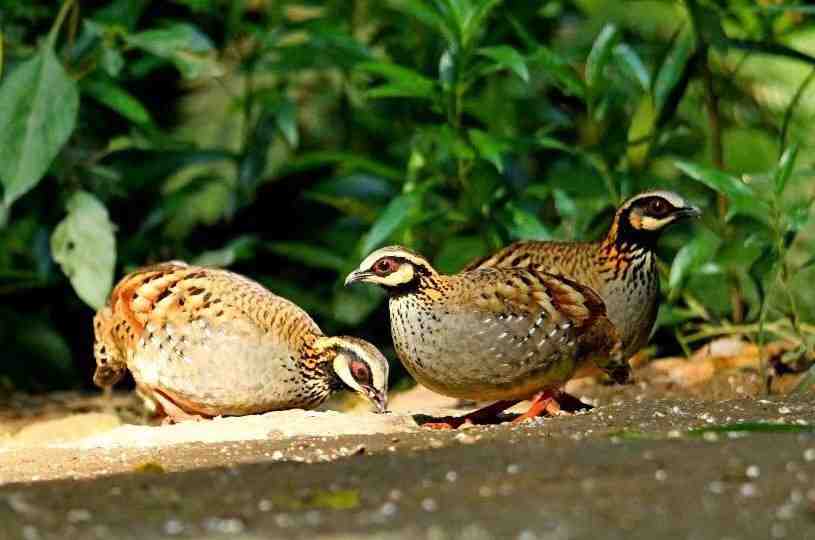Arborophila atrogularis
IUCN
LCBasic Information
Scientific classification
- name:Arborophila atrogularis
- Scientific Name:Arborophila atrogularis
- Outline:Landfowl
- Family:Chickeniformes Pheasants Arborophila
Vital signs
- length:24-28cm
- Weight:220g
- lifetime:5-7years
Feature
The cheek and ear feathers are milky white
Distribution and Habitat
Worldwide distribution: It is found in China, northeast India and northeast Myanmar.
Distribution in China: It is distributed in Yingjiang area of western Yunnan Province.
It lives in the low hills below 1500 meters above sea level and likes to live in sparse and humid evergreen broad-leaved forests and bamboo forests.
Appearance
Arborophila albus has gray forehead, olive brown crown, brown pillow and hind neck; Eye first and brow line black, connected with each other to form a long black longitudinal band, extending back to the side of the neck, there is also a black band under the eye, from the beginning of the eye to the side of the neck and brow line meet; There is a broad band immediately above the brow line, the front end is slightly narrow yellow and white, and the later becomes wide grass yellow with black spots; The cheek and ear feathers are milky white, joining each other to form a wide white longitudinal band; Back to tail covered with olive brown, dense with regular black stripes; The upper cover feathers on the tail are narrow and not obvious, and the upper cover feathers on the wings are the same color as the back, with thicker black stripes, and the tip of the feathers are slightly maroon. Primary fly feathers and cover feathers dark brown, feather tip slightly stained with light chestnut; The s
Details
White-cheeked Partridge has no subspecies.

Partridges often move in groups, consisting of 5-8 or more than 10 individuals. Good at running and walking on the ground, generally rarely take off. It feeds mainly on plant food such as shoots, young leaves, buds, berries and seeds of understory shrubs and herbs, but also on animal food such as insects and other small invertebrates.
The breeding season of partridge is from April to June. The nest is in evergreen broad-leaved forest, bamboo forest and forest margin scrub in the low mountain hills and the plain area at the foot of the mountain. The nest is mostly placed in a pit on the ground, with hay leaves and leaves, surrounded by shrubs or tall grass cover, hiding better. Each clutch lays 3-5 eggs, occasionally as many as 7 eggs, the size of the eggs is 32.4-42.4 mm ×26.2-31.8 mm, the average 37.6 mm ×28.4 mm. The female birds incubate eggs, during the incubation period, the female birds are very fond of the nest, and sometimes people go to the near the nest before they do not fly. Young birds have sex early and can follow their parents soon after hatching.
The distribution area of Artridge is narrow, the number is few, and the population size is declining due to habitat loss and hunting.
It was included in the List of Land Wild Animals under State Protection that are beneficial or have important economic and scientific research value (Item 91) issued by the State Forestry Administration of China on August 1, 2000.
The white-cheeked artridge has been listed on the IUCN Red List of Threatened Species (IUCN) for 2016 ver 3.1 - Near Threatened (NT).
Listed in China's "National Key Protected Wildlife List" (February 5, 2021) Level 2.
Protect wild animals and eliminate wild meat.
Maintaining ecological balance is everyone's responsibility!








